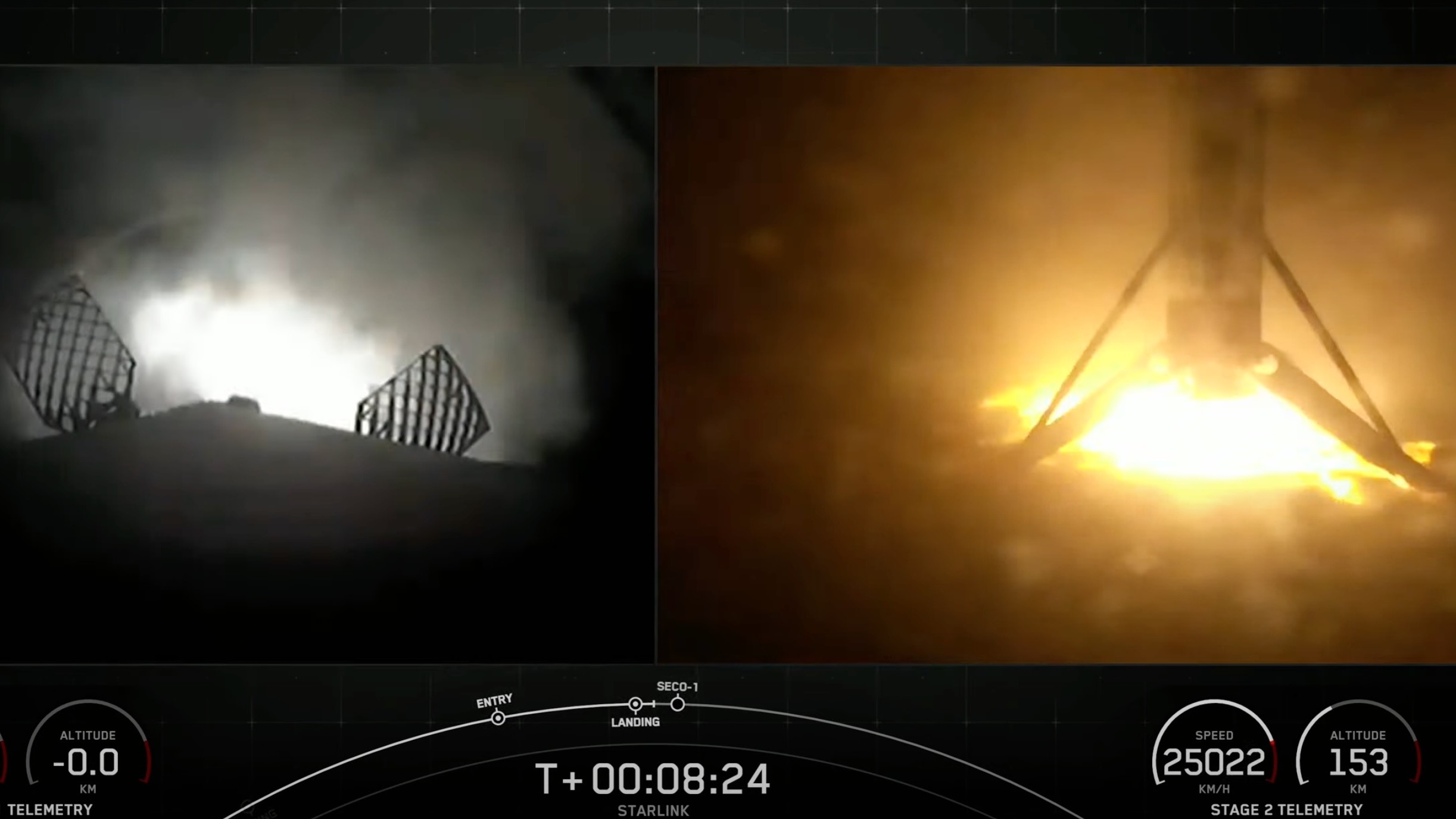SpaceX launches 52 Starlink satellites, lands rocket at sea
SpaceX launched another big batch of its Starlink internet satellites to orbit early Monday morning (June 12) and landed the returning rocket at sea.
A Falcon 9 rocket topped with 52 Starlink spacecraft lifted off Monday at 3:10 a.m. EDT (0710 GMT) from Cape Canaveral Space Force Station in Florida, in the first of two planned SpaceX launches for the day.
The Falcon 9's first stage returned to Earth about 8.5 minutes after liftoff for a pinpoint touchdown on the SpaceX droneship Just Read the Instructions, which was stationed in the Atlantic Ocean.
Related: Starlink satellite train: How to see and track it in the night sky
It was the ninth launch and landing for this particular booster, SpaceX wrote in a mission description.
The rocket's upper stage, meanwhile, continued carrying the 52 Starlink satellites to low Earth orbit, ultimately deploying them about 65 minutes after liftoff as planned.
SpaceX has launched more than 4,500 Starlink satellites to date, and nearly 4,200 of them are currently operational, according to astrophysicist and satellite tracker Jonathan McDowell.
Breaking space news, the latest updates on rocket launches, skywatching events and more!
But the Starlink megaconstellation is nowhere near complete: SpaceX has permission to deploy 12,000 of the broadband satellites and has applied for approval for another 30,000 on top of that.
The early-morning Starlink liftoff was the first leg of a planned Falcon 9 doubleheader on Monday. SpaceX also plans to launch the Transporter-8 rideshare mission at 5:35 p.m. EDT (2135 GMT) from Vandenberg Space Force Base in California. Transporter 8 will send 72 satellites aloft for a variety of customers.
You can watch the Transporter-8 launch here at Space.com when the time comes.
Editor's note: This story was updated at 3:45 a.m. ET on June 12 with news of successful launch and rocket landing, then again at 5 p.m. ET with news of successful satellite deployment. It was also corrected at 1:15 a.m. ET on June 14 to state that the booster landing occurred on the droneship Just Read the Instructions, not A Shortfall of Gravitas.

Michael Wall is a Senior Space Writer with Space.com and joined the team in 2010. He primarily covers exoplanets, spaceflight and military space, but has been known to dabble in the space art beat. His book about the search for alien life, "Out There," was published on Nov. 13, 2018. Before becoming a science writer, Michael worked as a herpetologist and wildlife biologist. He has a Ph.D. in evolutionary biology from the University of Sydney, Australia, a bachelor's degree from the University of Arizona, and a graduate certificate in science writing from the University of California, Santa Cruz. To find out what his latest project is, you can follow Michael on Twitter.

